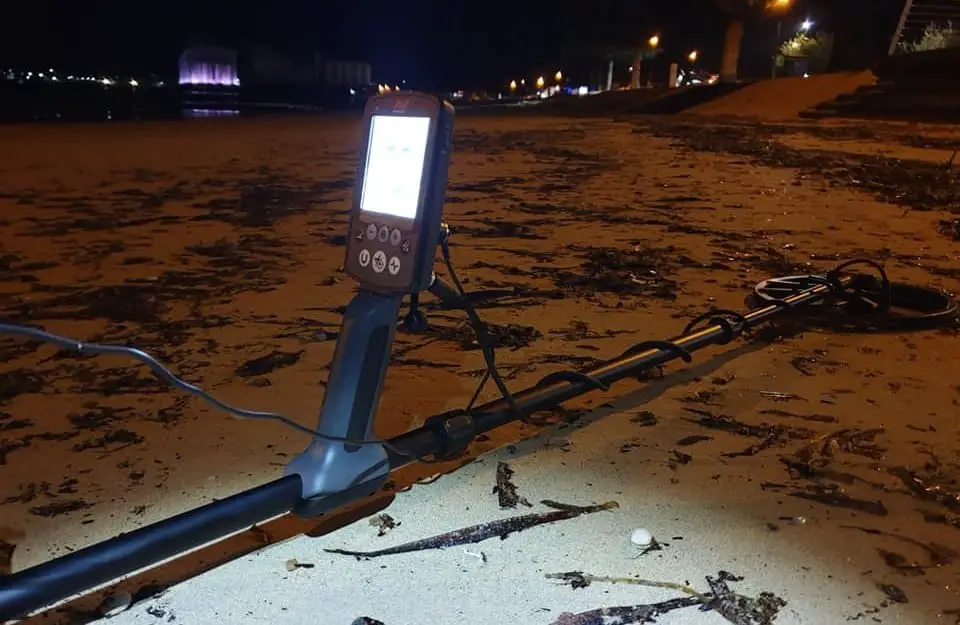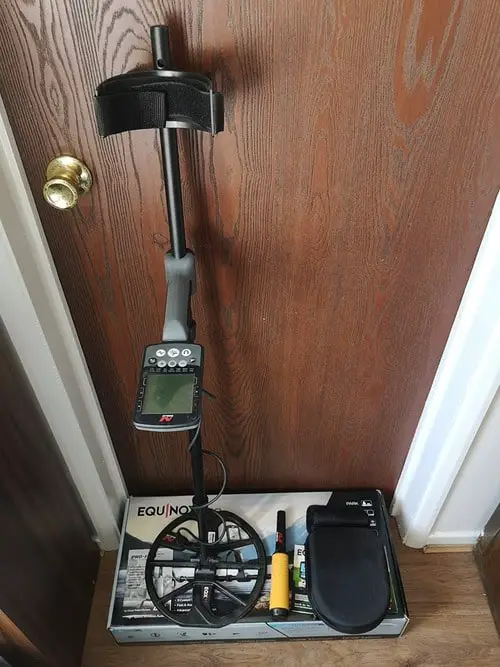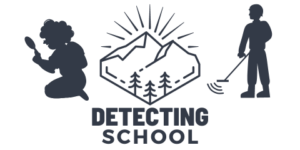
Minnesota, known for its people singular accent and its huge number of lakes (around 16,000), is a decent state for detecting hobbyists! In fact, it could hold some highly valuable targets that you can search using your detector …
… However, don’t do anything before being aware of the regulating laws (Don’t worry, I explain everything in this Post) so you won’t get into unnecessary issues …
… Also, in this article, I share some helpful info these topics:
- Locations to explore
- A machine to try on Minnesota soil
- Thoughts to come up with Gold finds
- Some Clubs suggestions to join
- Beach detection in there
Let’s get into it …
What are the metal detecting laws in Minnesota?
It is better to be careful beforehand rather than facing charges later on! I know that the legal aspect of things is probably the most boring, that’s why I will be very quick and list the most important laws that you should respect while using your beloved machine in Minnesota:
- The use of detector is strictly prohibited in the state-owned parks throughout the state.
- Indian burial sites are not allowed to be used for metal detection by ordinary people (they mean hobbyists who are doing this as a leisure and not as a profession)
- Any sacred place or place having archaeological importance is out of the list for your metal identifying hobby. These places can be detected after taking special permission from the authorities
- National Parks allow detection activities but only after an approved permit, and it should be kept in mind that while detecting you should not harm any living object or misplace valuable things
- If you are exploring an archaeological area and you come across any priceless artifact, you are supposed to report it to the authority
- While detecting the authorities allow you to remove a handful of rocks from common areas like picnic spots, campground areas, beaches, etc. as long as those areas don’t fall under any mining authority
Where to go detecting in Minnesota?
It is important to be aware of where you should actually detect!
If you turn up with empty hands every time you go detecting or end up digging junk like iron and aluminum objects, you will eventually lose the enthusiasm and desire to carry on your hobby.
One thing you should keep in mind that the places which have been frequently visited by detectorists are not likely to yield anything as they would have swiped out the area clean…
…Thus, you should locate those places which are a bit isolated or have seen fewer footfalls of other hobbyists!
One important thing is that you should never trespass private property if you want to detect there, get the permission of the owner before doing so. Here are few places in Minnesota that you can target with the hope of collecting valuables:
- Beaches
- Old churches
- Wood and foot pathways
- Old farm
- Old houses
- East Central Minnesota
- Farms of Southern Minnesota
- Ramsay county
- Banks of Red River near Robin
- Minnesota has some towns named as ghost towns which are famous for treasure hunting
A Decent Detector for Minnesota Soil!

If you are planning to detect in there, you will find your luck in farm fields and isolated ruins! The things you are likely to see are silver coins, jewelry, valuable stones, artifacts, relics, etc…
…And one of the best partners for scanning through Minnesota soil is the Fisher F44 (Check it Here at Amazon!). This is a high-quality device with significant features of speed, power, and versatility.
The best feature that it has to offer is its weatherproof feature … It is user-friendly for beginners and brings a lot of solid features for experienced practitioners!
This machine is apt for searching for coins, jewelry, relics, artifacts, etc. It is a light-weight with adjustable iron audio which quickly passes through the trash. The box is waterproof and the most cherished feature is the big display screen with various options.
It comes with a screen that has a backlit option and displays a nine segment discrimination scale, depth indicator, battery power indicator, and two-digit target identification. On the other hand, it has a bigger coil compared to others within a similar range, which increases the sensitivity zone.
Finally, if you are willing to invest in a much more professional machine … Then, I encourage you to check My Favorite Detector Here at Amazon! It is a Minelab device that can operate on several frequencies all at the same time!
Beach detecting in Minnesota
The state has a history of very first civilization across the shores. Even the history and folk tales describe various treasures hidden along the coastline of the country, some during the civil war, some from loot, some from a wrecked ship that washed away to the shore.
Since decades, metal detectors have been wading their waterproof sensor over the sand in hope to find some of the buried treasures, and many of them have the luck of finding pieces of valuable Jewellery and gold nuggets.
The north shore of Lake Superior in Duluth is one of the most common places in Minnesota where you can go for detecting.
Apart from the historical point of view, these places are visited by a thousand people during vacations. Thus, people have found a large number of coins, rings, chains, or other pieces of jewellery while exploring this area.
The mainline shore at Lake Phalen in Minneapolis is also a great spot where you can go and sway your detector over the ground to dig out some valuable objects.
Searching for gold there
Chances are you will be able to find gold nuggets or gold objects in Minnesota! In fact, there are various pieces of evidence that people in the past have found gold flakes while detecting the area.
A few companies have also come up with drilling really deep to find the hidden treasures that the folk tales say about, but many of them have to stop the drilling empty-handed. Gold nuggets are very rare to find, but you can have luck with finding gold pieces of jewelry.
Most of the gold objects are located near the lakes and the shores. There have been reports that suggest the findings of gold grains and flakes near the deposits of Lake Vermillion in Minnesota…
… But prospectors say that one can find gold flakes or grains throughout the Minnesota land. The location of gravel pits, rock quarries can also yield some gold ornaments. You can also dry digging out the backyard of old churches and cathedrals or any old tree or spot in such religious places.
Thus, in some parts, you may have got a surprise in the form of gold nuggets, but you are more likely to find some gold jewelry or parts of it while exploring the area.
What other finds to expect there?
Apart from the valuable metals discussed above, the state has many other things to offer while you dig out the soils in the farms or the beachline. Some of the common objects you can find are:
- Coins which can be of gold, silver, nickel bronze or copper
- Jewelry or prices of jewellery. They can be valuable or maybe ancient
- Relics or artifacts
- Keys
- Semi-precious stones like agate can also be found under the sands
Apart from these valuable objects, hobbyists come across a large amount of junk while detecting.
Indeed, several machines are highly sensitive to irons. Whenever objects of iron or aluminum are detected, the indicator will beep the alarm.
The most suitable places for finding these items are the familiar recreational places visited by people for a vacation.
One of the most favorable places is the farm fields. The plowing of the land results in bringing these buried items to the upper layers of the ground. This helps the detector to find them easily.
Check more finds here!
Are there good clubs in Minnesota?
As the hobby has gained steadily growing popularity throughout the world, various places have come up with the idea of detection clubs.
There are clubs devoted to the people who love this sport! Grocers State Treasure Hunters is one such club designed for such a purpose…
… The members of this club are active and helpful to each other. In this kind of clubs, a meeting is conducted once in a while where people showcase their finds; they also decide and discuss which areas are more suited to venture out next and to determine the varieties and value of their finds.
Minnesota artifact recovery group is another club where the members work to discover old relics or valuable artifacts holding historical significance. Zumbro Valley Treasure Hunt is another that you can join!
Finally, if you are planning to share your finds and passion for this hobby with other hobbyists in there, that such clubs is definitely the way to go!
Getting your Permit to Detect in Minnesota!
The Archaeological Resource Preservation Act is the law in Minnesota along with some other state laws that prohibit the detection of metals in several places throughout the country…
… Another law is the National Historic Preservation Act!
Thus, if you are planning to detect metals and valuables in the areas that are prohibited, then, you need to take prior permission from these authorities.
The state park authorities sometimes do not respond appropriately to grant you permission, in case this happens just avoid using your machine in those areas as you can face legal charges.
And if you want to detect a private property, then, you should get permission from the owner!
Conclusion
Obviously, my goal was to explain everything related to this hobby in Minnesota … Hopefully, you will learn new and helpful info to get started properly with your detection journey!
However, my goal also was to encourage you to discover, with your beloved machine, new places and territories that, probably, you were not used to before! In fact, the beauty and joy that comes with this hobby (and outdoor hobbies in general) is when you practice them in unusual places …
… That’s where the highest rewards could be collected!
For more states, I invite you to check this detecting article in North Carolina!
